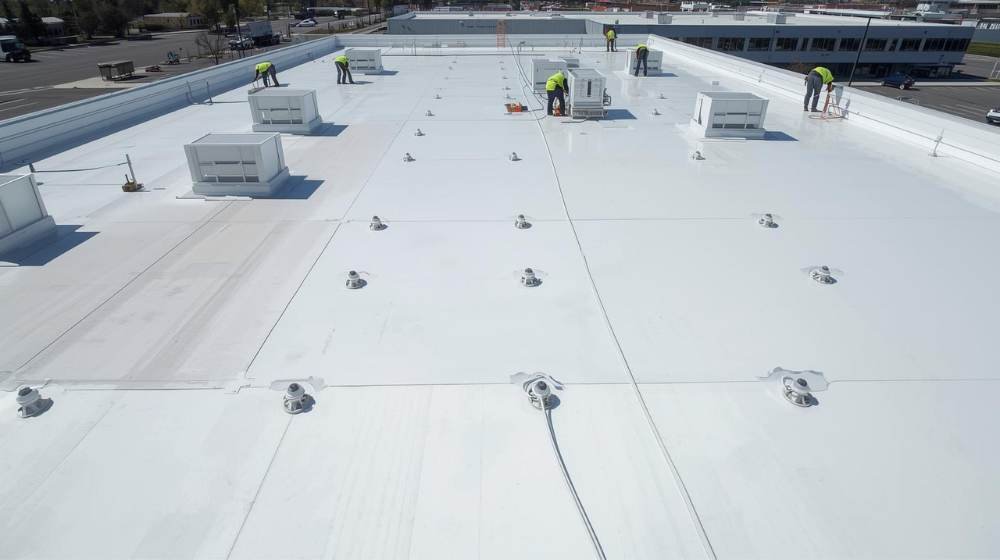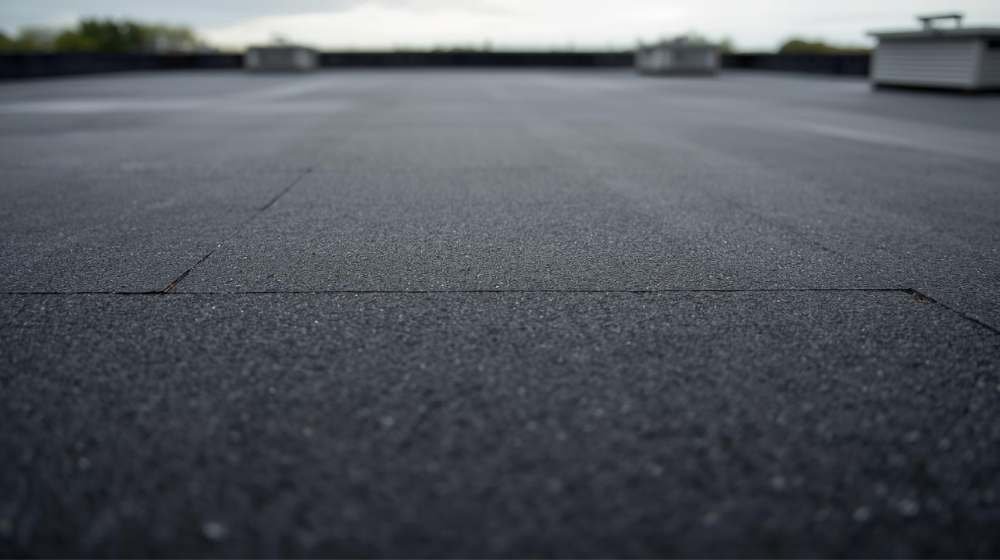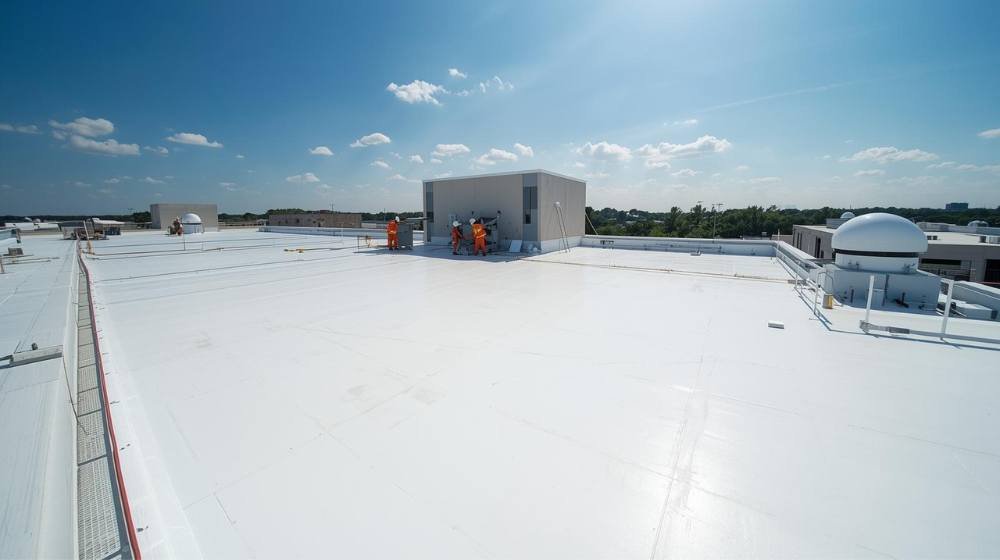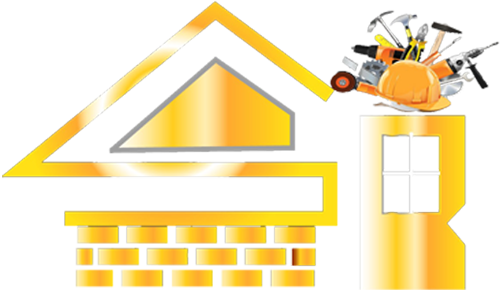
When it comes to roofing your home or business in Brooklyn, NYC, the question often arises: TPO or EPDM? With so many choices available, it’s hard to know which is the best fit for your building and budget. If you’re looking for a durable, energy-efficient solution, you should know the differences between these two popular roofing materials.
You may ask: Which material provides superior protection from Brooklyn’s unpredictable weather? Or, which option is more cost-effective over time? These are important considerations, and I’m here to guide you through them.
Let’s dive into the details of TPO vs EPDM roofing systems, so you can decide which one is the best choice for your Brooklyn home or business. Stay with me, and by the end, you’ll have all the information you need to make a confident decision!
What are TPO and EPDM Roofing Systems?
TPO (Thermoplastic Olefin) is a single-ply roofing membrane that is known for its energy efficiency and reflective properties. It’s made from a combination of polypropylene and ethylene-propylene rubber. This makes TPO both flexible and durable, able to withstand Brooklyn’s tough weather conditions.
EPDM (Ethylene Propylene Diene Monomer), on the other hand, is a synthetic rubber roofing system. It’s widely appreciated for its long lifespan and excellent resistance to harsh elements like UV rays and extreme temperatures. EPDM roofs are typically black or dark-colored, which makes them ideal for areas that experience cold winters, as they help absorb heat.
TPO Layers
TPO roofing systems are made up of three key layers, each with a specific purpose to enhance the roof’s performance:
- Top Layer: This layer is the most important for UV protection. It’s made to reflect sunlight, which helps keep buildings cool and reduce energy costs. The white color of TPO is highly reflective and provides heat resistance.
- Reinforcing Layer: This middle layer is typically made of a fabric mesh or polyester. It provides strength and flexibility to the TPO membrane. This layer ensures that the roof stays intact and can handle Brooklyn’s diverse weather, including high winds.
- Bottom Layer: The bottom layer is designed for adhesion to the roof deck. It ensures a strong bond between the TPO membrane and the surface of the roof. Some TPO membranes have a fleece backing for better adhesion.
EPDM Layers
EPDM roofing is a simpler system, usually made from a single, large rubber membrane, but it still has different layers that work together to provide durability and protection.
- Single-Ply Membrane: The main feature of an EPDM roof is its single-layer membrane. It is highly flexible and can be installed in large sheets to minimize seams, which helps prevent leaks. This is a key reason why EPDM is known for its water resistance.
- Thickness Options: EPDM membranes typically come in 45 mil, 60 mil, or 90 mil thicknesses, depending on the specific needs of the roof. The thicker the membrane, the more durable and puncture-resistant it is.
- Reinforcement: Some EPDM systems are reinforced with a layer of scrim (a woven mesh) for added strength. This reinforcement helps the membrane hold up against stress, temperature changes, and physical damage.

Detailed Comparison Between TPO Roofing vs. EPDM Roofing
When choosing the right roofing system for your building, it’s crucial to know the key differences between TPO and EPDM. Both materials have strong protection, but each one has its own set of benefits. By comparing them, you can make a more informed decision based on what’s most important for your needs.
Which is more durable: TPO or EPDM Roofing?
Durability is a key consideration when selecting a roofing system, especially in Brooklyn’s climate. TPO is known for its resistance to UV rays and chemical damage, but it has a shorter lifespan than EPDM. EPDM, on the other hand, is more resistant to extreme temperatures and performs better in cold weather, making it a better choice for Brooklyn’s harsh winters. Consequently, EPDM is more durable than TPO roofing systems.
Which is more affordable, Cost Comparison Between TPO and EPDM Roofing?
Cost is an important factor when deciding which roofing material to choose. Here’s the cost comparison based on the installation costs in Brooklyn, per square foot:
| Type | Material Cost (per sq. ft.) | Labour Cost (per sq. ft.) | Total Installation Cost (per sq. ft.) |
| TPO | $3.50 – $8.50 | $2.00 – $8.00 | $5.50 – $16.50 |
| EPDM | $4.00 – $9.00 | $3.50 – $7.50 | $4.00 – $12.00 |
TPO is generally more expensive for installation compared to EPDM. However, the cost difference can vary depending on factors like roof size and contractor choice.

Now it’s time to explore the repair costs between TPO and EPDM roofing
| Repair Type | TPO Average Cost (per sq. ft.) | EPDM Average Cost (per sq. ft.) |
| Seam Repairs | $1.00 – $2.00 | $0.75 – $1.50 |
| Puncture or Tear Repair | $0.50 – $1.00 | $0.40 – $1.00 |
| Recoating for Longevity | $1.50 – $3.00 | $1.00 – $2.50 |
| Leak Detection and Fixing | $0.75 – $2.00 | $0.60 – $2.00 |
| Flashing Repairs | $1.00 – $2.00 | $0.75 – $2.00 |
TPO roof repair type is higher than EPDM, especially for seam and flashing repairs. So, EPDM Roofing is more affordable than TPO in every aspect.
Temperature Resistance of TPO vs EPDM Roofing
When it comes to temperature resistance, EPDM is the better option. It can handle both extreme heat and cold much better than TPO. EPDM stays flexible even in freezing temperatures, while TPO may become brittle in the cold.

Leak Resistance of TPO vs EPDM Roofing
When it comes to leak resistance, EPDM is the winner. Its seamless installation helps prevent water from getting in. EPDM is highly reliable in keeping your roof dry. While TPO is durable, it may break down over time. In areas with heavy rain or snow, EPDM provides a more secure barrier against water damage. If you want a roof that holds up better against leaks, EPDM is a safer option.
Puncture Resistance of TPO vs EPDM Roofing
EPDM has better puncture resistance. Its thick rubber membrane can handle impacts and is less likely to puncture. This makes it a good choice for areas with foot traffic or where scraps may cause damage. TPO is thinner and more likely to get damaged by sharp objects. If you need a roof that can handle tough conditions, EPDM is the better option.
Energy Efficiency of TPO and EPDM Roofing Systems
TPO is more energy efficient. Its white surface reflects heat away from the building, keeping it cooler in the summer. This can reduce cooling costs by up to 30%. EPDM is black, so it absorbs more heat. While it can help warm your building in winter, it may increase cooling costs in the summer.
Installation and Maintenance of TPO and EPDM Roofing Systems
TPO Installation and Maintenance
- Easier and quicker to install than EPDM, especially in warmer months.
- Fewer seams are needed, which reduces the risk of leaks.
- TPO roofing requires regular inspection, particularly around seams to ensure it remains intact.
- Higher upfront cost
EPDM Installation and Maintenance
- More complex installation, often requiring larger sheets of material.
- While seamless, EPDM may still need periodic sealing and checks for damage.
- Less frequent repairs compared to TPO, as it’s more durable and long-lasting.
- Lower initial cost.

Key Differences Between TPO and EPDM Roofing
When choosing between TPO and EPDM roofing, it’s important to understand the key differences between the two. Both have their strengths, but they perform differently based on climate, durability, and cost. Here’s a quick comparison to help you decide which one is best for your property.
| Factor | TPO Roofing | EPDM Roofing |
| Material | Single-ply membrane made from TPO (thermoplastic olefin) | Synthetic rubber made from EPDM (ethylene propylene diene monomer) |
| Color | Usually white or light-colored, highly reflective | Typically black or dark gray, absorbs heat |
| Durability | Moderately durable, can be affected by seams over time | Highly durable, lasts longer in harsh conditions |
| Temperature Resistance | Good in moderate climates, can become brittle in cold weather | Excellent in both cold and hot weather, remains flexible in extreme temperatures |
| Energy Efficiency | Reflective, reduces cooling costs by up to 30% | Absorbs heat, may increase cooling costs in hot climates |
| Installation | Easier to install, fewer seams to worry about | More complex installation due to large sheets |
| Repair Cost | Higher repair costs due to seam issues | Lower repair costs, durable and less prone to leaks |
| Lifespan | 15-25 years | 20-30 years |
| Cost | Typically more expensive upfront | Generally cheaper upfront |
| Seam Resistance | Can develop issues with seams over time | No seams, reducing risk of leaks |
The Pros and Cons of EPDM Roofing
EPDM roofing is a popular choice because it offers strong performance and durability. But like any material, it has both advantages and disadvantages.
Pros of EPDM Roofing
- Long lifespan: Can last over 30 years with proper care.
- Weather resistance: Handles extreme weather well, including freezing temperatures.
- Low maintenance: Requires little upkeep once installed.
- Cost-effective: Generally more affordable upfront than other roofing options.
- Durable: Resistant to UV rays and ozone, which helps prevent degradation.
- Seamless installation: Fewer seams reduce the risk of leaks.
Cons of EPDM Roofing
- Not energy-efficient: Absorbs heat, which can raise cooling costs in the summer.
- Color limitations: The black color may not suit some building styles.
- Not reflective: It doesn’t help with reducing heat during hot months.
- Requires regular checks: While low-maintenance, it still needs occasional checks for punctures or damage.
- Installation complexity: Larger sheets can make installation trickier.
- Puncture vulnerability: While durable, sharp objects can damage EPDM more easily than some other materials.

The Pros and Cons of TPO Roofing
TPO roofing has gained popularity for its energy-efficient qualities and relatively easy installation. However, it’s not without disadvantages. Here are the pros and cons to consider.
Pros of TPO Roofing
- Energy-efficient: Reflects sunlight, helping to reduce cooling costs by up to 30%.
- Durable: Resistant to UV rays, ozone, and weather conditions.
- Affordable installation: Lower upfront cost compared to other roofing materials.
- Easy to install: Fewer seams make for faster and easier installation.
- Heat resistant: Great for moderate climates with warmer summers.
- Light-colored surface: Helps reduce heat absorption, keeping buildings cooler.
Cons of TPO Roofing
- Not ideal for cold climates: Can become brittle in freezing temperatures.
- Seam issues: Over time, seams may weaken, leading to potential leaks.
- Shorter lifespan: Typically lasts around 15-25 years, less than EPDM.
- Prone to punctures: Not as resistant to sharp objects or heavy foot traffic as EPDM.
- Requires maintenance: Seams and edges need to be checked regularly to avoid leaks.
- May fade over time: The reflective surface can degrade and lose its efficiency as it ages.
TPO vs EDPM Roofing: Which Is Better for Brooklyn’s Weather?
For Brooklyn’s weather, EPDM is the better choice. It works well in both cold winters and hot summers. TPO can become brittle in freezing temperatures, which makes it less reliable during harsh winters. EPDM also resists heat, which is helpful in the summer months. Because of its strength and ability to handle all kinds of weather, EPDM is the most reliable option for Brooklyn roofs.
Where to Choose a Professional Roofing Contractor Near You?
Are you looking for an expert roofing contractor in Brooklyn, NYC? SR General Construction has you covered! Our business is located at 8807 Avenue B, Brooklyn, NY 11236, United States, in the Canarsie area.
We proudly serve all areas of Brooklyn with high-quality, durable roofing solutions. From new installations to repairs and maintenance, we provide the best service at affordable prices. Contact us and experience why we’re Brooklyn’s roofing experts!
FAQ
1. What’s the difference between TPO and EPDM roofing?
TPO is a single-ply membrane that’s reflective and energy-efficient, while EPDM is a durable synthetic rubber roof that handles extreme temperatures well. TPO is more energy-efficient, while EPDM lasts longer and performs better in cold weather.
2. Which is more durable, TPO or EPDM roofing?
EPDM is more durable than TPO, lasting 20 to 30+ years. TPO typically lasts 15 to 25 years, and seams can weaken over time.
3. Is TPO more energy-efficient than EPDM?
Yes, TPO is more energy-efficient due to its reflective surface. It can reduce cooling costs by up to 30%. EPDM absorbs more heat, increasing cooling expenses in warmer climates.
4. Which roofing is best for Brooklyn’s weather, TPO or EPDM?
EPDM is the better choice for Brooklyn’s weather. It handles cold winters and hot summers better than TPO, which may become brittle in cold weather.
5. Which is better for flat roofs, TPO or EPDM?
Both materials are great for flat roofs. TPO is better for energy efficiency, while EPDM offers more durability in harsh weather.
6. How do TPO and EPDM compare in terms of repair costs?
EPDM tends to have lower repair costs compared to TPO. TPO often requires more maintenance around seams.
7. Which roofing material is more eco-friendly?
TPO is more eco-friendly due to its reflective surface, which reduces the need for air conditioning. EPDM is also eco-friendly, but doesn’t offer the same energy savings.
